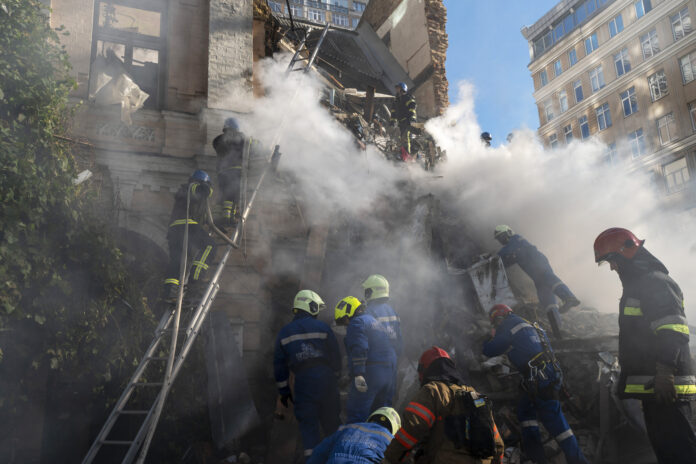The use of suicide drones in Ukraine could be a prelude to a new phase in the now eight-month-old conflict, an expert in drone warfare says.
Drones have been featured throughout the war in Europe, be it Ukraine’s use of the Bayraktar TB2 drone or Russia’s Iranian-made Shahed-136, the latter of which made headlines recently due to strikes in Kyiv.
These modern weapons “provide a critical capability” to exploit vulnerabilities in defences, and their use may be a prelude to a new phase in the conflict, said U.S. Army Lt.-Col. Paul Lushenko.
“What we’re observing in the ongoing war in Ukraine is a proliferation of drones of various shapes and sizes,” said Lushenko, who is also a PhD candidate at Cornell University.
“It’s hard to determine whether or not this is a prelude to a new phase of the conflict, but nevertheless continues to proliferate these (suicide) drones widely to have tactical … (and) operational implications.”
Drones are unmanned aerial vehicles that can be remote-controlled or preprogrammed for a variety of uses.
There are many types of drones, including more sophisticated unmanned ones that can launch missiles. The U.S.-made Predator is one of the more common known drones to be used in combat.
A drone is seen in the sky seconds before it fired on buildings in Kyiv, Ukraine, on Oct. 17.
Efrem Lukatsky/AP
Shaheds are relatively cheap, costing roughly US$20,000 each – a small fraction of the cost of a full-size missile. Ukrainian President Volodymyr Zeleknskyy said last week that Russia had ordered 2,400 from Iran.
Tehran has denied supplying the drones to Moscow, but by using them, Russia can avoid putting aircraft and pilots at risk and save its limited stock of expensive long-range precision missiles.
During an attack on Kyiv on Monday, Mayor Vitali Klitschko said 28 drones made up waves of successive attacks. Fired from a truck launcher in rapid succession, the drones can fly low and avoid radar detection.
2:09
Iran denies supplying Russia drones amid aerial assault on Ukraine
However, their power to terrorize exceeds their explosive punch, according to Mykola Bielieskov, a research fellow at Ukraine’s National Institute for Strategic Studies.
The Shahed only carries a 40-kilogram explosive charge, compared to a conventional missile’s 480-kilogram warhead, he told The Associated Press on Tuesday. The issue is, they can be difficult to shoot down.
“They can fly in bunches. On the radar, it is one mark, and in that mark, there are actually five (drones),” Ukraine’s air force spokesperson Yuriy Ihnat told Reuters on Tuesday.
“Unfortunately, it is not possible to hit 100 per cent (of them) because the target is difficult and small in size.”
Russia’s use of the Shahed drones shows there’s an “arms race” going on in Ukraine over this type of equipment, Lushenko said.
In addition to its drone arsenal, Ukraine has also been equipped by allies with similar drones like the U.S.-made Switchblade and Phoenix Ghost.



